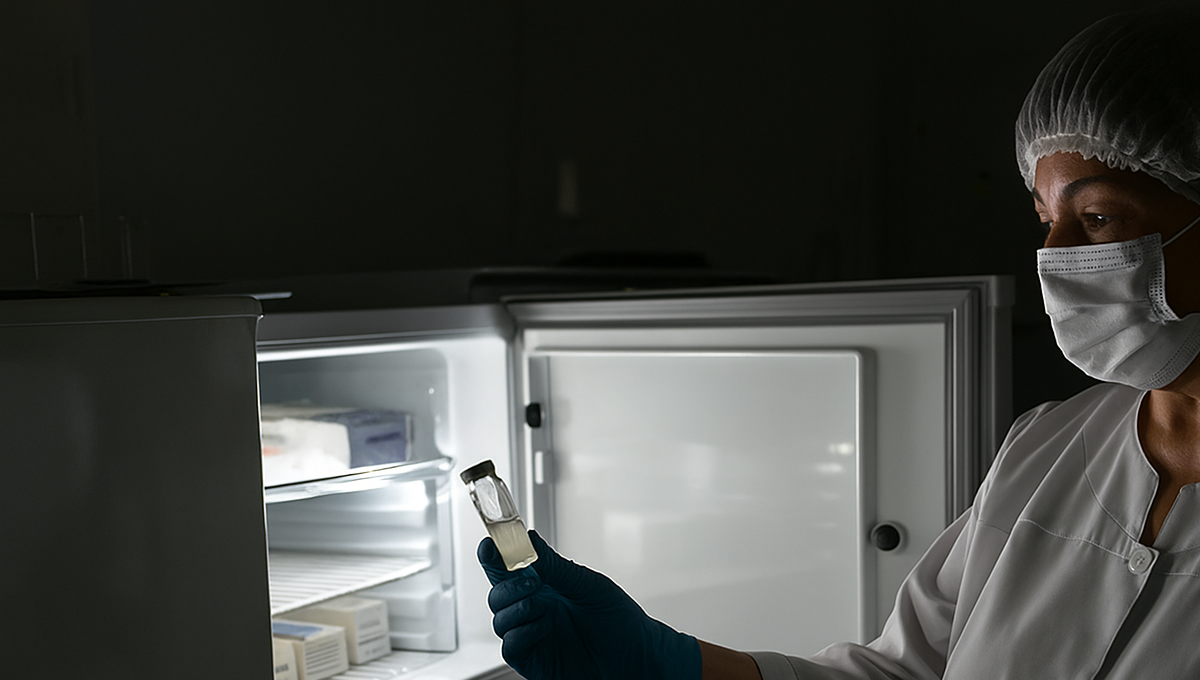Sudden power outages threaten vaccine efficacy, as the critical storage temperature range must be maintained for potency. Even brief temperature deviations can compromise effectiveness, risking public health and causing financial losses. This guide offers practical steps for safeguarding vaccine storage during power cuts in clinical, pharmacy, and laboratory settings, ensuring compliance with UKHSA and MHRA guidelines and protecting cold chain integrity.
Which action will help to prevent an interruption of the power supply for a vaccine storage unit?
In the UK, the best way to prevent an interruption of power to a vaccine storage unit is to install an uninterruptible power supply (UPS) or have a standby generator connected to essential electrical circuits. NHS immunisation guidance also recommends:
- Using dedicated vaccine fridges with built-in battery-backed temperature monitoring
- Avoiding extension leads or shared sockets
- Routinely testing backup systems as part of your cold chain contingency plan
- Labelling plugs and power switches to prevent accidental disconnection
At practice or pharmacy level, simple measures like socket covers and staff training can reduce the risk of accidental unplugging.
Which container is the best option for emergency vaccine transport?
The UKHSA and NHS recommend using a validated vaccine cold box or vaccine carrier with pre-conditioned ice packs for emergency transport. These containers are specifically designed to:
- Maintain vaccines within +2°C to +8°C for extended periods
- Prevent direct contact between vaccines and ice
- Be used in accordance with Public Health England’s Vaccine Incident Guidance
Coolers or domestic insulated bags should not be used unless validated and monitored with a digital data logger. Always record the time, temperature, and contents during emergency transfers.
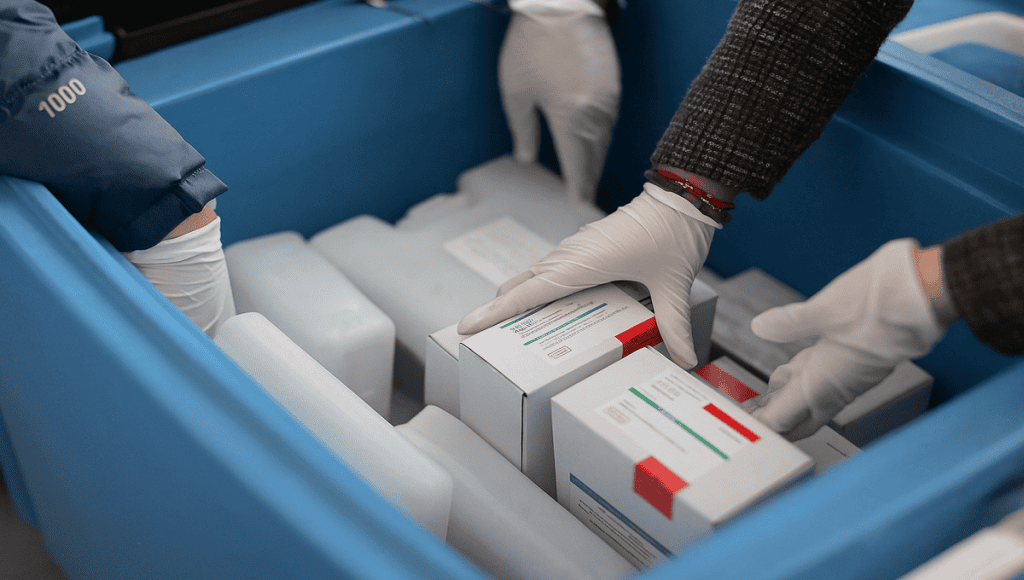
How do you keep vaccines cold during a power outage?
Maintaining correct storage temperatures during a power outage is vital to preserving vaccine potency and meeting safety regulations. Most vaccines must be stored between +2°C and +8°C, and any deviation can compromise their effectiveness. Here’s how to protect vaccines when refrigeration is interrupted:
- Keep the fridge closed
Limit door openings to retain cold air. A closed medical refrigerator can typically maintain safe temperatures for up to 4 hours. - Transfer to a validated cooler or cold box
If the outage is expected to last longer, move vaccines into an insulated cold box or cooler with conditioned ice packs or gel bricks. Always place a barrier (e.g. bubble wrap or cardboard) between the ice and vaccines to prevent freezing. - Use alternative cold storage if needed
For fieldwork or extended outages, consider battery-powered portable medical fridges. These are purpose-built to maintain cold chain conditions in remote locations or during transport. - Monitor and document temperatures
Always use a calibrated digital thermometer or battery-backed data logger to track internal temperatures. Continuous monitoring is essential for compliance and safety during an outage. - Follow your contingency plan
Adhere to your cold chain contingency protocol, which should include steps for transferring, storing, and monitoring vaccines during emergencies, as well as details of backup locations and transport procedures. - Invest in reliable backup solutions
Facilities with critical vaccine storage should consider fridges and freezers with battery-backed alarms and monitoring. For prolonged outages, liquid nitrogen (LN₂) backup systems offer a dependable solution for maintaining ultra-low temperatures.
ARCTIKO supports healthcare providers with a full range of medical-grade cold storage solutions, including battery-supported monitoring and optional LN₂ backup systems, ensuring vaccine integrity is maintained even during mains power outages.
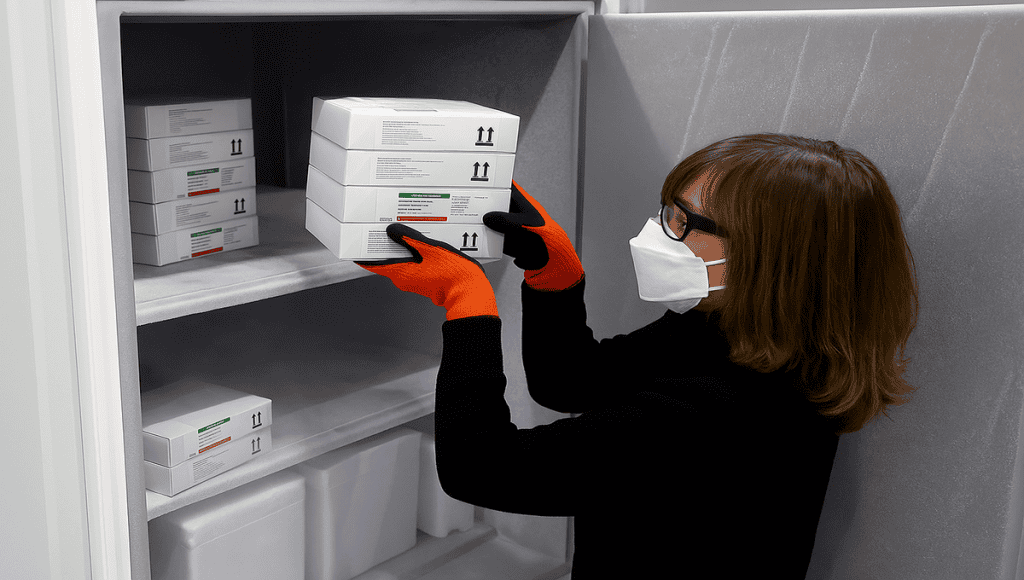
What to do with your medical fridge if you lose power?
A power outage can seriously compromise the integrity of temperature-sensitive items stored in a medical fridge – including vaccines, insulin, blood products, and biological samples. Here’s what to do to protect your stock:
- Keep the fridge closed
Limit how often you open the door. A sealed medical refrigerator can typically keep contents within safe temperature limits (2°C to 8°C) for up to 4 hours, depending on ambient conditions and insulation quality. - Check the internal temperature
Use a calibrated thermometer or data logger to monitor internal temperatures. If your unit has a battery-backed data logger, continue recording temperatures throughout the power outage to support compliance and decision-making. - Transfer contents if needed
If power is not expected to return within 2–4 hours, move the contents to a pre-qualified cooler or cold box with ice packs. Ensure items do not touch the ice directly to avoid accidental freezing. - Follow your cold chain contingency plan
Healthcare and lab environments should have a written contingency plan for cold storage emergencies. This includes contact details for backup locations and guidance on safe transport. - Document and report
Log temperature data and any corrective actions taken. Regulatory bodies such as the MHRA and UKHSA require clear documentation in the event of temperature excursions. - Plan for future outages
Consider upgrading to cold storage with built-in battery-backed monitoring or LN₂ backup systems to maintain temperature stability during extended power cuts.
How long can a flu vaccine be left unrefrigerated?
In the UK, flu vaccines must be stored between +2°C and +8°C, in accordance with UK Health Security Agency (UKHSA) guidelines. If a flu vaccine is left unrefrigerated, the exact duration it remains viable depends on:
- How long was it out of cold storage
- The ambient temperature it was exposed to
- The manufacturer’s stability data
Short exposures (e.g. under one hour at room temperature, around 20–25°C) are often not harmful, but this must be confirmed with the manufacturer or your local screening and immunisation team. In all cases, the incident must be logged as a cold chain breach, and the vaccine should be quarantined until advice is received.
Vaccines that have been out of the cold chain should never be used unless approved by a healthcare professional following a risk assessment. Documentation should comply with local SOPs and MHRA requirements.
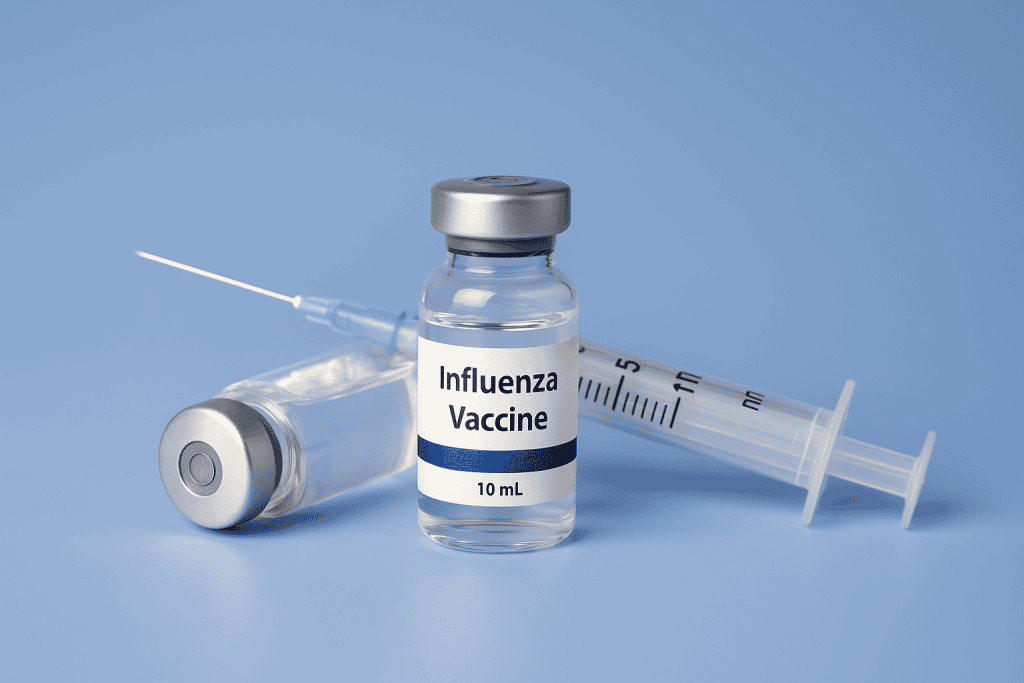
How long can a tetanus vaccine be left out of the fridge?
Tetanus-containing vaccines such as Revaxis or Boostrix-IPV must also be kept between +2°C and +8°C. If a tetanus vaccine is left out of the fridge, the following steps apply:
- Record how long it was unrefrigerated and at what temperature
- Quarantine the vaccine immediately
- Contact the manufacturer for stability advice (e.g. Sanofi Pasteur or GSK)
- Seek guidance from your UKHSA health protection team if needed
Brief temperature excursions (e.g. under an hour at room temperature) may be acceptable but always consult the manufacturer or local vaccine incident protocol.
In all cases, follow UK vaccine storage SOPs and do not assume a vaccine is usable without professional confirmation.
Should I open my medical fridge when the power is out?
No, during a power cut, opening the fridge can significantly reduce the amount of time it stays within safe temperature limits. According to the UKHSA:
- A closed vaccine fridge can typically maintain temperature for 2–4 hours
- Opening the door allows cold air to escape and warm air to enter, accelerating the temperature rise
- Only open the fridge if necessary, and log the time and duration
If you suspect that vaccine temperatures have gone outside of the recommended range, isolate the stock, document the incident, and contact your screening and immunisation team for further advice.
Conclusion
A power outage can happen without warning, but with the right preparation, its impact on vaccine storage can be minimised. From maintaining closed fridges and using validated cold boxes to investing in battery-backed monitoring or LN₂ backup systems, every action counts in safeguarding cold chain integrity.
By following guidance and having a clear contingency plan in place, healthcare providers and laboratories can protect temperature-sensitive vaccines and maintain compliance, even during unexpected disruptions.
For dependable cold storage solutions built to withstand power cuts, ARCTIKO offers a range of medical-grade fridges and freezers designed to support your critical operations when it matters most.
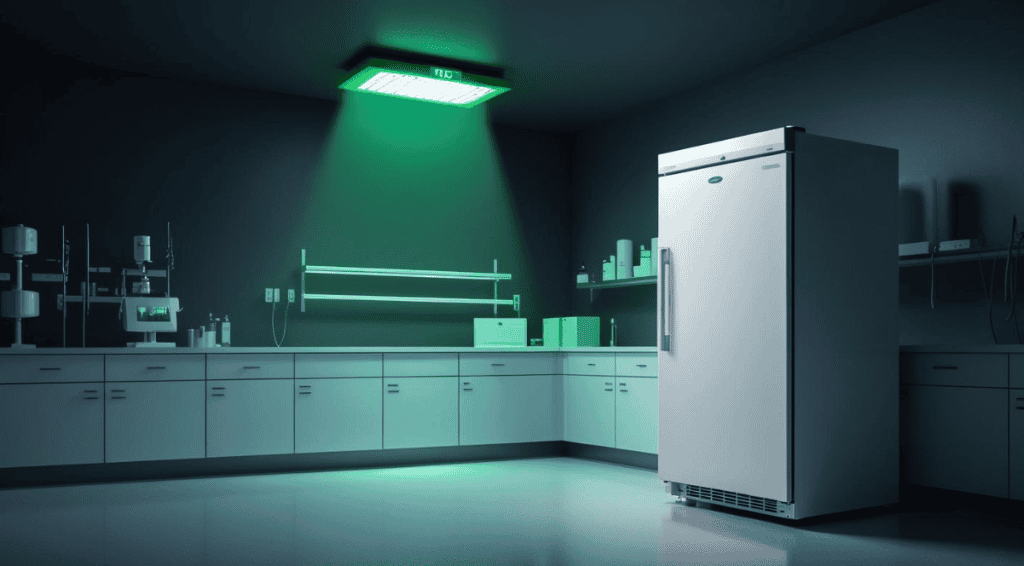

 Fast Delivery
Fast Delivery  Global Compliance
Global Compliance  Long Term Support
Long Term Support